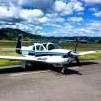Help Troubleshooting Fluctuating Fuel Pressure
-
Members Online
- hazek
- kortopates
- 201er
- Jakes Simmons
- DanM20C
- Jim Peace
- cliffy
- GeeBee
- Scott Ashton
- 201Mooniac
- Marc_B
- Schllc
- Jeph357
- mluvara
- Andy95W
- Butch
- Hradec
- KSMooniac
- Justin Schmidt
- Vintagevalves
- atpdave
- Ragsf15e
- AndreiC
- jlunseth
- benworthy058
- ArtVandelay
- IvanP
- Matthew P
- ta2too
- Ibra
- natdm
- jennifashby
- AIREMATT
- fdc7169


Recommended Posts
Join the conversation
You can post now and register later. If you have an account, sign in now to post with your account.